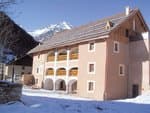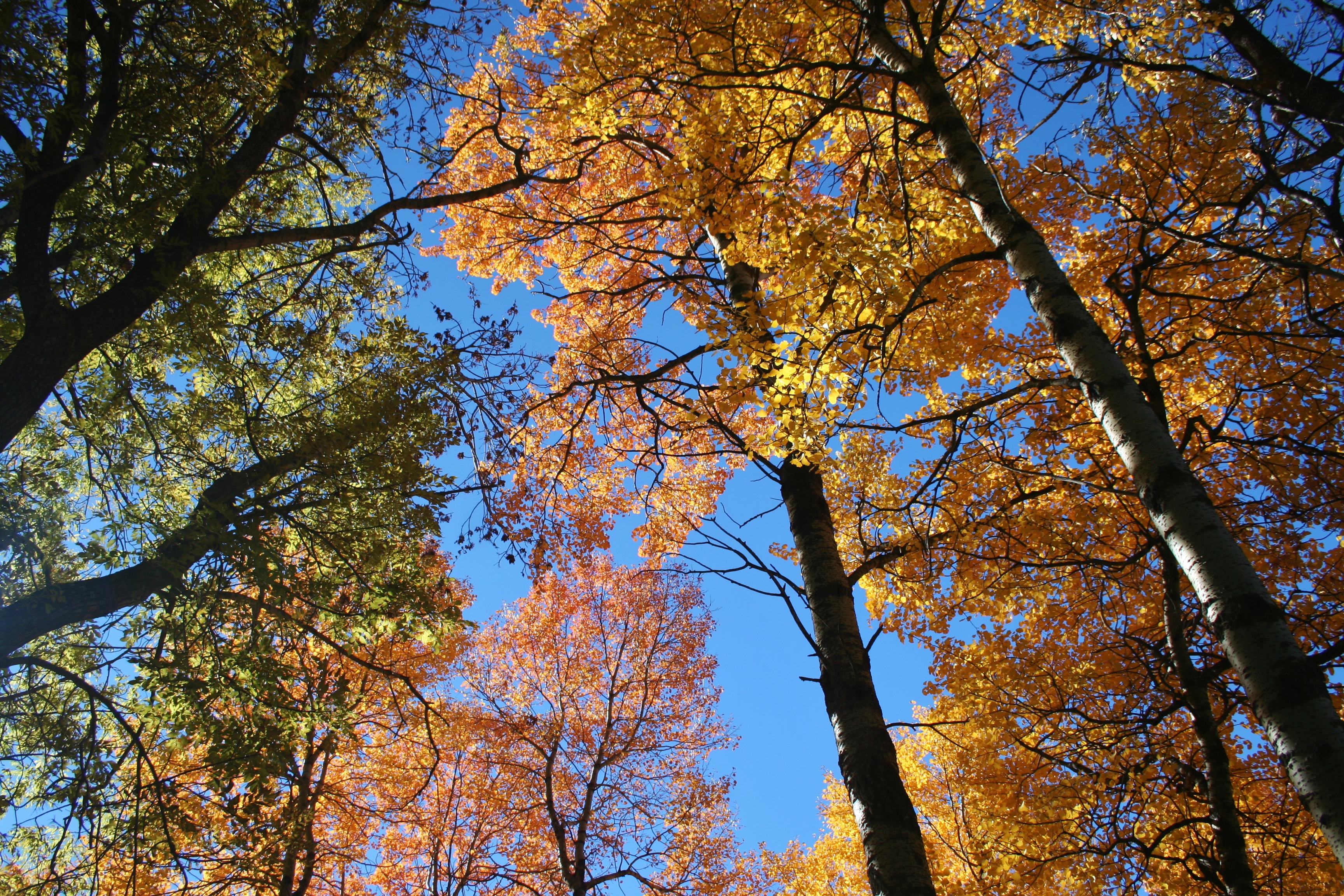
40 winding paths on a mountain bike
Difficulties with the hairpin bends? At the end of this descent, narrow turns will no longer hold any secret for you.
5 points of interest

Chapelle Saint Louis - Benjamin Musella - PNR Queyras  Patrimony and history
Patrimony and historyThe Saint Louis Chapel
In the 16th century, religious wars were raging throughout France. Protestant troops settled in the Queyras valley. In 1561, a Protestant community is formed in Abriès. From 1574 to 1583, altercations occur and in 1587, the Queyras valley becomes Protestant. The Edict of Nantes (1598), established by King Henry IV of France, grants freedom of worship and soothes conflicts. When Louis XIV came to power, he sought to unify the kingdom religiously. After many persecutions, he revokes the Edict of Nantes in 1685. Like the Protestants of France, many Queyrassins (demonym for the people living in the Queyras) decide to migrate to Switzerland, Germany, Latin America and South Africa. The Saint Louis Chapel was built after the revocation of the Edict of Nantes on funds donated by King Louis XIV of France.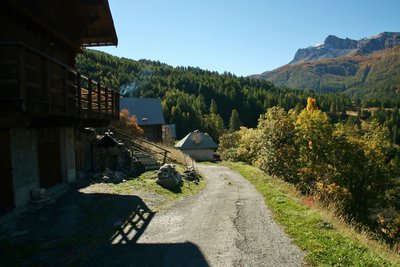
Prats-Bas - Benjamin Musella - PNR Queyras  Patrimony and history
Patrimony and historyPrats-Bas
The entrance to the village of Prats-Bas. In the background, we can see the Mount Pointe de Rasis. In between, we can make out the valley of the Aigue Blanche mountain torrent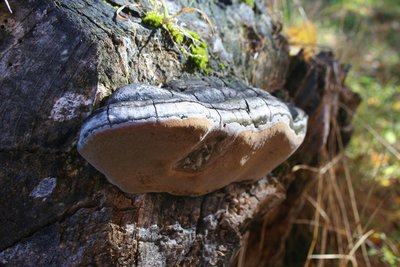
Fistuline hépatique - Benjamin Musella - PNR Queyras  Flora
FloraFistulina hepatica (beefsteak fungus)
Better known as the "Ox Tongue", this fungus mainly grows on oak and sweet chestnut trees. It takes advantage of tree wounds or holes to settle. When this fungus emerges on its host, it causes a colour change, but does not alter the structure of the wood. In fact the wood is reddish-brown and keeps its strength. In rarer cases, this wood is sought in cabinetmaking.
Prats-Haut depuis la fin de la montée - Benjamin Musella - PNR Queyras  Patrimony and history
Patrimony and historyPrats-Haut
In the Queyras, each valley has its architectural features. Here, the building type is that of the great vaulted stable. The ground floor is in masonry, primer and partly buried upstream. The entrance is through a yard which gives access to the stable, the "estabblot" (a pen for goats and ewes), the kitchen and the bedroom (Cazet). A raised floor allowed the family to live right above the animals and so to enjoy their heat. The construction above is in wood. It is very airy in order to dry the hay. The floors to the north, very resistant, were used for threshing and the balconies facing southwest were used for drying. The roof is usually from shingle.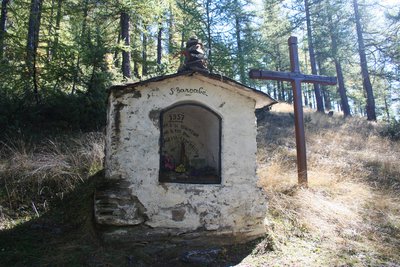
Oratoire Saint Barnabé - Benjamin Musella - PNR Queyras  Patrimony and history
Patrimony and historySaint Barnabé Oratory
Oratories are small religious monuments for prayer. But not only, they could be used to indicate a direction, a spring, a ravine or the entrance of a village. Each oratory protects its patron saint and every patron saint is prayed to for a reason. Saint Barnabé was called upon to stop the rain triggered by Saint Médard, the patron saint of farmers. A saying states: "If it rains on St Medardus’ Day, it rains for forty days more".
Description
Cross one of the two bridges and turn right on a track. Cross a stream, turn left and go up the Chanteloube forest road. Continue on this forest road that flattens after a short steep climb.
1 - At the sign "pierre plate" (skidding area), turn left onto a wide grassy trail towards Prats-Bas. Take a left once on the road, and go up to reach Prats-Haut.
2 - Enter the village and turn almost at 180°; on the left at the fountain. Pass in between houses and go up on false flat on the grassy hillside.
3 - Go to the other side of the mountain, enter the forest and follow the marked trail that alternates between short descents and short ascents.
4 - Reach a forest track by a skidding area, continue for 50m in ascending false flat and take the well-marked trail on the left. Take the ascending track that flattens and ends up in a bumpy technical part.
5 - Crossing a track, continue straight on for 10m and turn left at the Bois Forant point. Go down a clean and rolling single track that goes from switchback to switchback. Emerge on a broader path, turn right and reach the Chanteloube forest road (ascending path).
6 - Turn right and follow the track until Aiguilles.
- Departure : Aiguilles
- Arrival : Aiguilles
- Towns crossed : Aiguilles and Château-Ville-Vieille
Forecast
Altimetric profile
Information desks
House of the Queyras Regional Nature Park
3580 Route de l’Izoard, 05350 Arvieux
The House of the Queyras Regional Nature Park is closed to the public.
OTI du Guillestrois et du Queyras
Maison du Tourisme du Queyras, 05350 Château-Ville-Vieille
Transport
05 Voyageur: 04 92 502 505 Tourist Office of Queyras : 04 92 46 76 18
Access and parking
Follow the D947 to Aiguilles. At the entrance of the village, turn right towards the recreation area.
Parking :
More information
Report a problem or an error
If you have found an error on this page or if you have noticed any problems during your hike, please report them to us here:

